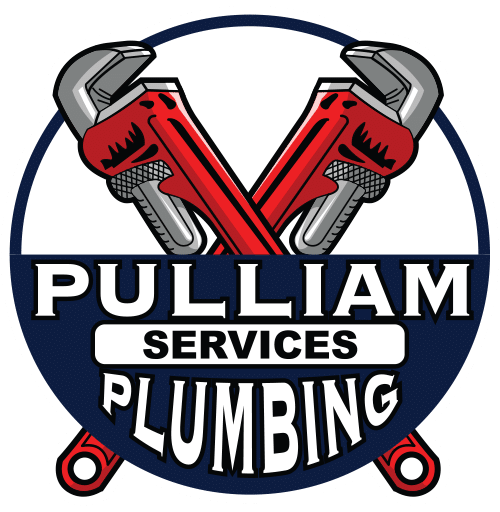Introduction
When it comes to ensuring the quality of our household water, a water softener plays a vital role in removing minerals that can cause hardness. Installing a water softener in the right location is crucial for optimal performance and efficiency. In this step-by-step guide, we will explore the process of determining the ideal placement for a water softener in your home.
1. Assessing Water Supply
Before diving into the installation process, it’s essential to identify the main water supply line entering your house. This is typically located near the water meter. By locating the water supply, you can determine where the installation should take place.
2. Choosing an Indoor Location
Water softeners are commonly installed indoors to protect them from the elements. Look for an area that is dry, well-ventilated, and easily accessible for maintenance. Consider spaces such as a basement, utility room, garage, or crawl space. Ensure the location has a power outlet nearby.
3. Considering Plumbing Connections
Next, evaluate the existing plumbing connections. Ideally, the installation site should have a dedicated water supply line and a suitable drain line. The water softener requires a constant water supply and a drain to remove the excess brine solution during regeneration.
4. Determining Space Requirements
Water softeners come in various sizes, so it’s crucial to consider the space requirements for both the equipment and the necessary plumbing connections. Measure the available space in the chosen location to ensure it can accommodate the dimensions of the water softener system, including any additional space needed for maintenance and future access.
5. Locating the Bypass Valve
A bypass valve is an essential component of a water softener system, allowing you to isolate the softener during maintenance or repairs. Ensure that the chosen installation location provides sufficient space for the bypass valve and allows for easy operation.
6. Installing a Pre-Filter
In some cases, installing a pre-filter before the water softener can enhance its performance and lifespan. The pre-filter helps remove larger particles, sediments, and other impurities, protecting the water softener from excessive debris. Consider installing a pre-filter if your water quality requires it.
7. Determining the Best Position
Once you have considered all the factors mentioned above, it’s time to determine the best position for your water softener. Take into account the plumbing connections, available space, and convenience of the location. Ensure that the installation complies with any local codes or regulations.
8. Mounting the Water Softener
Follow the manufacturer’s instructions for mounting the water softener in the chosen location. Typically, this involves securing the unit to a wall or a sturdy surface using appropriate brackets or mounting hardware. Ensure that the softener is level and securely fastened.
9. Connecting the Plumbing
With the water softener mounted, connect the dedicated water supply line to the appropriate inlet valve on the softener system. Use suitable fittings, ensuring a watertight connection. Connect the drain line to the softener’s drain valve, making sure it is routed to an appropriate drainage point.
10. Bypass Valve Connections
Attach the bypass valve to the inlet and outlet ports of the water softener. The bypass valve allows you to redirect water flow around the softener when necessary. Ensure the bypass valve is properly connected and functioning correctly.
11. Electrical Connection
If your water softener requires an electrical connection, ensure there is a power outlet within reach of the installation location. Follow the manufacturer’s instructions for connecting the softener to a power source. If you are not comfortable with electrical work, consult a professional.
12. Initial Setup and Testing
Once the water softener is installed and connected, follow the manufacturer’s instructions for the initial setup. This usually involves setting the correct regeneration cycle and programming any necessary settings. Test the system to ensure it is working correctly and addressing the hardness issues in your water supply.
13. Regular Maintenance
To maintain the effectiveness of your water softener, regular maintenance is essential. This includes periodically adding salt to the brine tank, cleaning the resin tank, and checking for any leaks or malfunctions. Refer to the manufacturer’s guidelines for the recommended maintenance schedule.
14. Benefits of Proper Installation
Installing a water softener in the appropriate location offers several benefits. It ensures efficient operation, extends the lifespan of the equipment, and provides convenient access for maintenance. Proper installation also prevents potential damage to the system and protects it from extreme temperatures or weather conditions.
15. Conclusion
Installing a water softener in the right location is crucial for maximizing its performance and reaping the benefits of softened water. By following this step-by-step guide, you can confidently determine the ideal placement for your water softener and enjoy the advantages it brings to your household.
If you’re looking for professional assistance with your water softener installation, consider our Water Softener Installation Service. We understand the importance of a properly installed water softener and the impact it can have on the quality of your water. Our team of experienced technicians is skilled in handling all aspects of the installation process, ensuring that your water softener is set up correctly and efficiently.
With our Water Softener Installation Service, you can trust that we will assess the ideal placement for your water softener, taking into consideration factors such as water supply, plumbing connections, and available space. Our technicians will work diligently to ensure that all connections are secure and properly installed, providing you with a reliable and effective water softener system.
At Pulliam Plumbing, we pride ourselves on delivering high-quality workmanship and exceptional customer service. Our team is dedicated to meeting your specific needs and exceeding your expectations. When you choose our Water Softener Installation Service, you can have peace of mind knowing that your installation will be handled by professionals with expertise in plumbing and water treatment systems.
We understand that every home is unique, and that’s why we offer personalized solutions tailored to your requirements. Whether you’re installing a water softener for the first time or upgrading your existing system, our knowledgeable technicians will guide you through the process and answer any questions you may have.
Don’t compromise on the installation of your water softener. Trust our Water Softener Installation Service to ensure a smooth and hassle-free experience. Contact us today to schedule an appointment and let us help you enjoy the benefits of softened water in your home.
FAQs
- Q: Can I install a water softener outside? A: It is not recommended to install a water softener outside due to exposure to the elements, extreme temperatures, and potential damage.
- Q: How long does the installation process take? A: The installation process can vary depending on factors such as the complexity of the plumbing connections and the chosen location. It can typically take a few hours to complete.
- Q: Do I need professional help for the installation? A: While it is possible to install a water softener yourself, if you are not familiar with plumbing or electrical work, it is advisable to seek professional assistance to ensure proper installation and avoid any potential issues.
- Q: Can I install a water softener in a tight space? A: Water softeners come in different sizes, including compact models designed for tight spaces. However, it is essential to ensure that there is enough room for the necessary plumbing connections and future access for maintenance.
- Q: Will a water softener solve all my water quality issues? A: A water softener primarily addresses water hardness caused by minerals such as calcium and magnesium. If you have other water quality concerns, such as contaminants or odors, additional filtration or treatment methods may be necessary.




